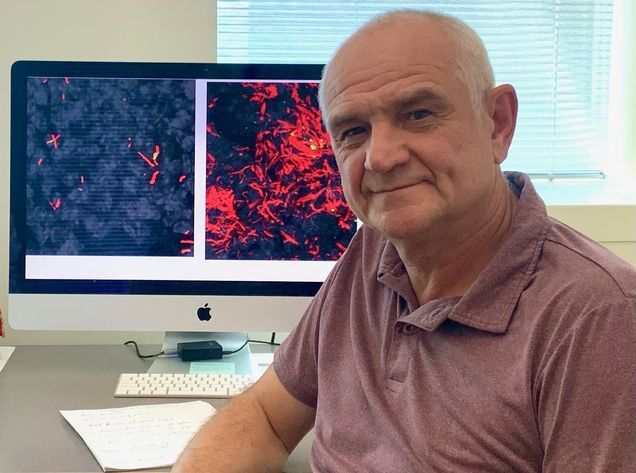Tweaking Host Cells to Better Fight Tuberculosis

Dr. Igor Kramnik has led a study published in Science Advances about helping host cells to better resist infection with Mycobacterium tuberculosis (Mtb). Because virulent Mtb infection causes tuberculosis (TB), guiding cells to fight this microbe could potentially curb the spread and severity of this disease. Dr. Kramnik and team devised a novel way to identify drug regimens that can convert cells from susceptible to resistant.
The background: The Kramnik laboratory previously established a unique mouse model of human-like pulmonary TB to reveal lung-specific microenvironments conducive to Mtb survival and replication despite systemic immunity. They identified a genetic locus responsible for control of lung damage during TB, which works by influencing the activation state of macrophages. Macrophages from susceptible mice acquire an aberrant activation state that eventually leads to hyperinflammation and tissue damage, thus promoting Mtb replication and spread.
The study: Dr. Kramnik and colleagues wanted to find interventions that can prevent the aberrant and deleterious macrophage activation state, facilitating instead their transition into a resistant state in which they kill the bacteria more efficiently. They developed a screening methodology that distinguished the resistant and susceptible activation states, based on gene expressing signatures. They tested perturbations to determine which could move susceptible macrophages closer to the resistant activation state, in collaboration with computational biologists who had developed a novel machine learning algorithm called “cell state transition assessment and regulation” (cSTAR). The screen identified a specific combination of two compounds as especially promising. Dr. Kramnik’s team then demonstrated that this predicted drug combination could prevent the aberrant activation of susceptible macrophages, and it enhanced their ability to control virulent Mtb in cell culture.
This initial study provides a framework for systematically identifying synergistic drug combinations for targeting mechanisms of host susceptibility to TB. It is likely that this methodology may also be useful for the development of mechanistic interventions for other chronic infections and inflammatory diseases.
Click here to read an article about this science in The Brink.